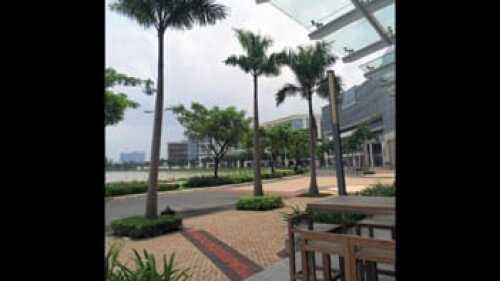Five experts discuss trends affecting commercial/retail development, including the near-term prospects for development and financing, strategies for making retail centers thrive, the influence of changing consumer preferences, and the impact of online retailers and social media.
Contributing their insights are Lawrence Casey, president and chief operating officer of Donahue Schriber in Costa Mesa, California, and chair of ULI’s Commercial and Retail Development Council (Blue Flight); Stephen Coslik, chairman and chief executive officer of the Woodmont Company in Fort Worth and chair of the Commercial and Retail Development Council (Green Flight); Nick Egelanian, president and founder of SiteWorks in Annapolis, Maryland; Jodie McLean, president and chief investment officer of Edens & Avant in Columbia, South Carolina, and a member of the Commercial and Retail Development Council (Green Flight); and Stephen Smith, principal of Bryanston Realty Partners in Chicago and chair of the Commercial and Retail Development Council (Silver Flight).
What are the prospects for retail centers in the next few years?
Lawrence Casey:
Lawrence Casey
They’re good. We are seeing an uptick in occupancy that began in March of 2010. Tenants are looking to expand their footprints and move into more markets and also expand their presence in existing markets. The national and regional retailers are more active and looking for infill locations, but the local retailers are showing some signs of life. Mostly the tenants looking for development opportunities are the larger, more national ones.
Jodie McLean: We are very focused on community-oriented retail, primarily on the East Coast, and 90-plus percent of everything we own has a grocery component. Retail in our sector is continuing to remain stable and become healthier. Development projects still make sense, but only where the retail square footage per capita is sufficient. I don’t think that greenfield projects are going to make sense until the housing market comes back. We are focused on urban development. Retailers are looking for new locations, although the number of locations they are looking for is smaller and in major markets where the population already exists. Retailers are expanding into smaller formats than we’ve seen before, so we spend a lot of time making sure that our spaces are able to adapt rapidly.
Stephen Coslik:
Stephen Coslik
There is a lot of capital out there, but as long as there are opportunities in the various product types to purchase existing product, there is not much opportunity for new ground up development. The banks are still cautious with how they’re lending in terms of percent of cost, percent of value, preleasing requirements. Equity sources that are willing to do new ground up development are still very few and have a high cost of capital. Also, the retailers still have a lot of opportunities to take over existing empty big boxes. So until capital gets looser and the vacancy of good retail space subsides, I don’t think there’s going to be a lot of new ground up retail development in America.
There are always exceptions, but I don’t think you’ll see many lifestyle mixed-use developments being undertaken. I think the consumer has spoken loud and clear that they want value and they want good pricing, and the lifestyle, upper-end tenants, that’s probably the weakest part of the market right now.
Stephen Smith: Nationally, the retail sector is significantly overdeveloped, so I can’t imagine any significant retail development over the next few years, with the possible exception of some urban infill sites. The acquisition activity has been very much focused on core properties—those with credit tenants in top markets. That activity has come back very quickly because there are so many investors in the market trying to move capital into this lower-risk segment.
We’ve all been waiting for a huge wave of troubled assets to hit the market, but unfortunately it looks like it’s not going to be as big as everybody was hoping. However, over the next year or two, we expect a significant increase in transaction flow as lenders and troubled owners are forced to put more troubled assets into the market. The real question is whether the pricing will be attractive enough to justify the risk associated with taking on those troubled assets.
Nick Egelanian:
Nick Egelanian
I look at retail today in the United States as consisting of two entirely different sets of properties: commodity shopping centers and specialty shopping centers. Commodity retail is anything people need on a regular basis, where they are motivated by two major factors—price and convenience. The commodity industry is mature, so fewer power centers and grocery centers will need to be built. But there are still opportunities in areas of the country with growing populations and in urban areas. That’s why you see retailers like Wal-Mart announcing they are going to add hundreds of smaller stores in urban areas.
With specialty retail, people are spending discretionary time and income, so they are expecting to be delighted in some way. As the role of the traditional department store continues to diminish and the number of functional malls declines, there will be an enormous opportunity for those who are willing to spend the time and effort to design the great places of tomorrow. And these specialty centers aren’t just for any one demographic. Every market in America has people who have some degree of discretionary income and time, and it’s simply a matter of analyzing that market and those people and giving them what they desire. The answer for Scranton will be very different from the answer for Orange County.
What kinds of financing opportunities/challenges remain in this economic climate?
Egelanian: There still are properties with construction loans that are in default or maturing in the next 12 months. I think we are two to three years away from a complete washout of all these troubled loans. Capital is returning, but on a much more restricted basis. For A properties, the cap rates have steadily moved down, and for B properties, they have moved up or stayed steady, so there is a huge divide between good and bad properties.
Casey: In the grocery-anchored sector, which is where we are, the lending environment is very positive. Lenders have seen that we’ve weathered the storm relatively well. Our centers never got below 93 percent occupancy through the Great Recession, and our grocers didn’t see the significant decreases in consumer spending that discretionary/aspirational retailers did. Commercial banks and life insurance companies and the resurgent CMBS [commercial mortgage–backed securities] markets are all vying for our business on terms that are much more favorable than they were during the Great Recession.
What strategies should owners pursue to help their centers thrive?
| Stephen Smith |
Smith: Many of the big box users, who were the growth engine of the last cycle, have scaled back or have gone out of business. The current growth is coming from the moderate-priced retailers looking for 15,000- to 40,000-square-foot [1,400- to 3,700-sq-m] spaces. The larger properties must now be reconfigured to accommodate these smaller users, cutting them in half or in thirds. These reconfigurations require significant capital investment from the existing owners, some of whom may not have access to additional equity. Given the significant upfront investment required to put new tenants in place, right now the smart owners are focusing on great asset management to hold on to their current tenants and maximize the value of their existing assets.
Coslik: Retail shopping center owners who have strong centers, in order to keep them strong, should have an active promotion program with events. This historically has not been the case for box centers. They should host community events, weekend events, promotions where the retailers participate by offering two-for-one specials.
McLean: Gathering spaces and green spaces, not necessarily large ones, have become more important in all of our centers. The aisles of Stop & Shop and Publix are the places where you bump into your neighbor. Benches are important—we call them the jewelry of our centers—where people can have a quick respite and catch up with each other.
Casey: Our mantra is that you need to be with the number-one or number-two grocer in a given market. The other grocers are vulnerable to the new competition for market share that’s coming from big boxes, dollar stores, drug stores, and convenience stores, which are now selling groceries. From our perspective, that’s the most important development in the last ten years. You also need to focus on occupancy, because vacancies translate to the consumer as a negative.
How are consumer preferences changing, and how is that affecting retail?
Coslik: Consumers feel a lot poorer today than they ever have. They don’t have the excess cash that they had before the downturn. As a result, overall the American consumer is far more frugal. But for their emotional well-being, they still want to have a perception of value and prestige with the merchandise they buy. A lot of the department stores have reverted to private labels because private labels are more profitable. But consumers still want to have that Nike, Coach, or Polo name on the merchandise. Value retail outlets may be getting more attention as a result of this.
Casey: Obviously there was a shift to value during the downturn, but I’m not sure that’s a permanent shift. We are seeing some increased activity in our discretionary-spending tenants and our aspirational retail tenants. But right now the value retailers are still experiencing more sustainable sales than the discretionary/aspirational retailers.
McLean:
Jodie McLean
Eighty percent of all retail purchases continue to be made by women. She is busier than ever, working outside the home more and more. Quality of life and family balance continue to be a struggle. The consumer in our portfolio is highly educated. She wants to shop at places that meet her everyday needs, but where the design is very comfortable. That’s why we strive to create shopping places that feel easy, safe, and family friendly. We also ensure that our merchandise mix is unique and reflective of the community. Our typical customer is coming from within a three-mile (5-km) range, so it’s important that she feels it is her center and the goods that she needs from national retailers are there, but that we also have local retailers unique to her community.
How is the internet changing the face of retail?
McLean: Our typical consumer is much more informed by online research about products. And social media are important: she relies heavily on recommendations from her communities about products and places to shop. In many of our retail centers, social media have been a great vehicle for conversation with the community, and it has provided a wonderful way for us to be directly responsive to our customers.
Casey: Technology is changing the way our merchants sell their product: they’re using it to augment the offerings in the bricks-and-mortar stores. But we are not convinced that there’s a permanent shift from bricks and mortar to the internet. Customers still want to try things on, still want to have the experience our centers hopefully provide them—a pleasant environment, a place to gather, and a chance to window-shop.
Smith: As states continue to scratch and claw for additional revenue sources, they will get a lot smarter and more aggressive about collecting taxes from online sales. In Illinois, for instance, the legislature recently passed a law requiring online retailers to collect the regular 6.25 percent sales tax for transactions made by their Illinois-based affiliates, such as small Amazon-related web businesses. Although Amazon quickly responded by very publicly cutting its ties with affiliates in Illinois, the fact is that similar laws will eventually pass in all these other cash-strapped states as state and local governments try to figure out how to cover their massive deficits. Online retailers will eventually lose this significant price advantage.
What other trends are influencing your sector?
Coslik: Returns have gotten thinner because the retailers are paying less, so I think public/private partnerships are going to become even more important, with government providing financial assistance in one form or another.
Egelanian: Two national retailers have told me in the last six months that they are either getting pushed out of A malls by the large REITs [real estate investment trusts] or they are pushing themselves out because the costs are getting too high. On the one hand, they don’t want to be in the malls that are likely to fail. But the better malls are getting even better, and because of the REIT structure, the mall owners are under a lot of pressure to increase funds from operations. And that’s with interest rates at a low level right now. Wait until they start soaring. They are pricing out almost everybody but the high-end apparel tenants. These retailers will inevitably look for alternate places to do business.Ron Nyren is a freelance architecture and urban planning writer based in the San Francisco Bay Area.










